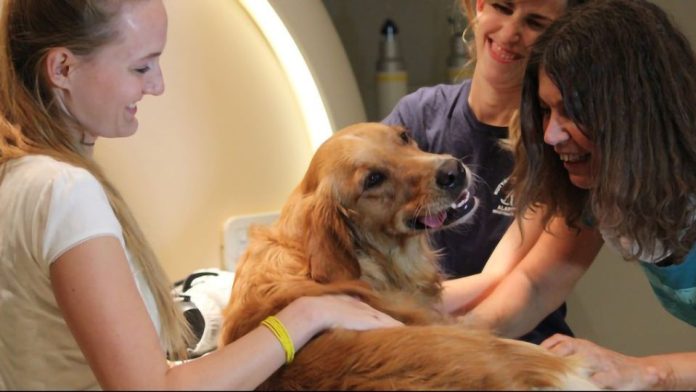Brain chemistry and function as observed with functional magnetic resonance imaging have revealed the similarities and differences in how the human brain responds to pets and children. Lori Palley, Doctor of Veterinary Medicine, Dr. Luke Stoeckel and Dr. Randy Gollub with the Department of Psychiatry at Massachusetts General Hospital Center are the first to establish a neurochemical basis for the relationship between women and dogs.
The 16 female participants met the requirements that they had at least one child that was between two and 10 years of age and that they had a dog that had been resident in the home with the child for at least two years. The researchers observed the women, their children, and the interaction of the women with their dogs and children in the home. The women’s responses to photographs of their children, their dogs, unknown dogs, and unknown children were monitored with functional magnetic resonance imaging (fMRI).
The results show that women showed similar responses to images of their dogs and children in the areas of the brain that are associated with reward, social interaction, visualization, and emotion. Photos of children produced more response in the substantia nigra and ventral tegmental areas of the brain that are associated with bonding. The participant women had more activity in the fusiform gyrus region of the brain that is responsible for facial recognition in response to photos of their dogs.
The researchers contend that there is potentially an evolutionary basis for the human brain’s response to animals and the differences seen in women’s response to dogs and children. There is a chemical basis for some of the response that has been seen in the oxytocin release that is produced by dogs in people. The small study does not define an absolute relationship in biochemical terms but new studies are planned with a broader group of participants that may define a distinct neurochemical relationship between dogs and humans.








